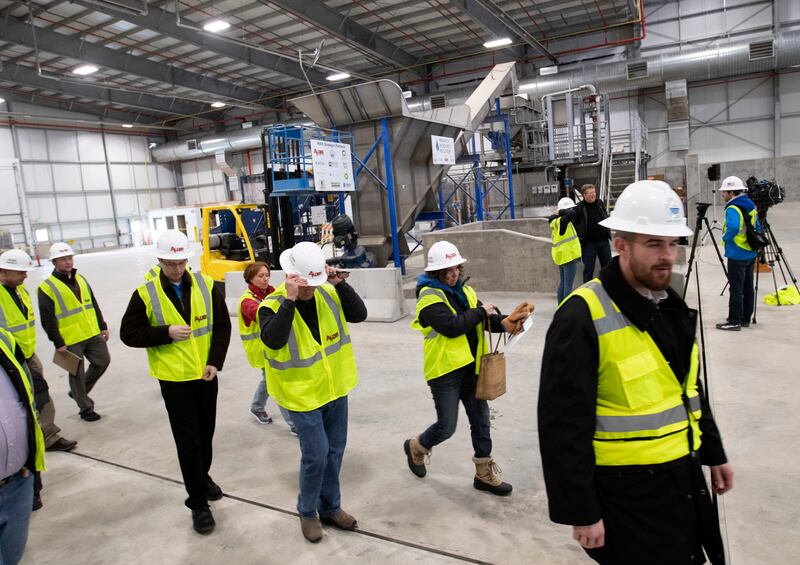NORTH SALT LAKE — Throwing out food no longer means it has to go to waste thanks to a new facility in Utah that converts food waste to clean, renewable energy.
Utah's first and only anaerobic food waste digester opened to the public Thursday for an open house highlighting how the center will turn food waste into renewable energy.
Wasatch Resource Recovery, a public-private partnership between ALPRO Energy & Water and the South Davis Sewer District, will take in about 700 tons of food waste daily. When it expands its operation in the near future, that number will double to about 1,400 tons.

Anaerobic digestion is a biological process in which microbes break down biodegradable material without oxygen.
"The anticipated amount of organic waste diverted to the anaerobic digester each year will equate to taking over 75,000 cars from the highway in carbon emissions," according to a press release from the company.
Other compost facilities in Utah can convert fruit and vegetable scraps into energy, but not much more. Wasatch Resource Recovery is the first in the state that's able to convert food waste into energy on a much larger scale.
"We're able to take the meat and the dairy and the cooked foods and the processed foods, sugary foods and packaged foods," said Morgan Bowerman, the plant's sustainability manager. "We can process all of that food waste here. So we get to do the full plate … at this facility. And there is nothing else like it here in Utah."
The main sources of waste will come from food manufacturing waste, restaurant waste, grocery store waste and grease trap waste. Since it's still a part of waste management, there is a fee for companies to recycle food waste to the plant instead of sending it all to the landfill — but doing so can save businesses a lot of money, Bowerman said.
"If you're a good manufacturer and you've got a lot of food waste, you're gonna save a lot of money by coming here," she said.
Within the year, the facility plans to place bins outside the facility for people to drop off food waste. Bowerman said residential curbside pickup could be an option someday, but would be years in the future if it happens.

Bowerman said 30 percent of landfills are filled with organic waste, which emits greenhouse gasses into the atmosphere. The digester is able to take that organic waste out of landfills, which would help decrease the amount of gas emitted into the atmosphere — something that can help air quality, said Eric Alder, president of Alder construction, the company that built the plant.
"As our community continues to grow, the landfills continue to get busier and busier and more and more full," he said. "So this takes all of the organics out of the landfill right now and extends the life of the landfills by many, many years, and that's a big deal for a lot of the communities around here."
The biomethane plant operates like a synthetic animal, Bowerman said. The first step is grinding all the food waste into a slurry, like a mouth does. The mixture then goes into the heated digester where naturally occurring microorganisms break down the food waste. During that process, they put off gas methane that the facility captures. The entire operation takes about two weeks from start to finish.
The methane the plant recovers is the same type of gas that operates most houses — for example, it's what's used to heat up a gas stove, Bowerman said.

The plant will produce enough energy to fuel a town of 40,000 people, roughly the size of Bountiful. The energy won't go to Bountiful though, but rather it will be sold exclusively to BP, at a profit.
There is a byproduct of the digestion process — a nutrient-rich, carbon-based fertilizer, which Bowerman said is "really wonderful." The facility hopes to partner with Utah State University to study the soil and sell it to agriculturalists.
"We've been chasing this for many, many years," Alder said. "It feels very validating … finally to see it like this and finally to have all the public support and all the support of the companies who are going to bring their food waste here, it's wonderful to see."
The $43 million facility, located at 1370 W. Center, will test its machines next week when the first food waste delivery arrives.
More information about the facility is available on its wasatchresourcerecovery.com.








